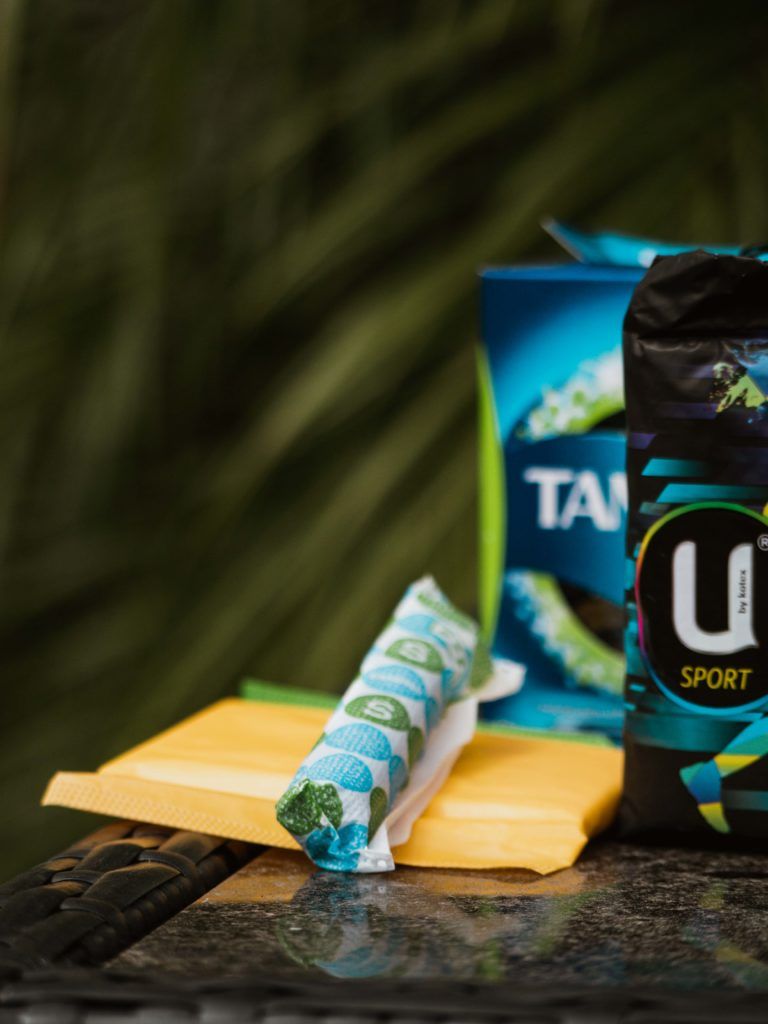HOW TO DEAL WITH YOUR PERIOD WHILE TRAVELING?
Periods come once a cycle (about every 28 days), and they’re going to be unavoidable on a long trip. It’s difficult to organise your road trip around your cycle, and just because they’re here doesn’t mean you have to restrict yourself.
If you are planning a world trip or a long trip, it’s normal to have some apprehensions and questions about this parameter.
How do you deal your period while travelling around the world? Can you find tampons and pads while travelling?
Gentlemen, don’t run away, a little knowledge won’t hurt you and you can always help and understand the women around you!
Solutions for dealing your period while travelling
Now you probably know that tampons and sanitary pads are not good for your body (hello toxic syndrome), nor for the planet. If you don’t know, go and have a look here, you’ll understand a bit better the issues.
There are no universal solutions, and sometimes finding the solution that suits us best can take time. Especially since not all cycles are the same (pain, flow, duration, etc.).
Menstrual panties
A menstrual panty is a panty that you wear for a day/half day (depending on the flow). Your period is absorbed by the panties and you only need to rinse and dry them at the end of the day. These menstrual panties have several advantages:
- Easy to use
- Pleasant to wear
- Good for the body
- Good for the planet
- Take the stress out of shopping in a hurry
Menstrual swimsuit
The principle is the same as the menstrual panties but in a swimming costume version. It allows you to bathe without risk of leakage.
- Easy to use
- Go into the water
- No need to wear tampons
- Good for the body
- Good for the planet
- Take the stress out of shopping in a hurry
Menstrual cup
It is a silicone receptacle that is inserted into the vagina to contain the flow of menstruation. The cup should be emptied regularly, rinsed and then replaced. And once the flow is over, it must be sterilised with hot water. The same applies before the start of the period. There are different sizes depending on the size of the vagina and the menstrual flow.
- Economical
- Goes into the water
- Adapts to the movement of the body
- Good for the body
- Good for the planet
- Take the stress out of shopping in a hurry
Pads
The most commonly used solution is an absorbent pad that is placed inside the panties and changed regularly during the day.
- Simple to use
- Easy to find
Tampons
This is another absorbent solution but it is inserted into her vagina. It should be changed regularly during the day.
- Going in the water
- Adapts to body movement
My experience and opinion
So I travelled for more than 10 months through many countries (Mexico, Guatemala, Nicaragua, Costa Rica, Panama, Colombia, Peru, Brazil, South Africa, Thailand, Turkey). The climate was almost always hot and humid.
Pre-departure test
Before I left, I had looked into different options for avoiding tampons and pads. I had tried cups and menstrual pants.
For the cups, I had bought one for about 15€ with a receptacle to sterilise it. After several attempts, I finally stopped. It worked, but it was more of a source of anxiety for me. Maintenance was easy as long as you had a tap in your toilet. And the lack of smell was also an advantage along with the fact that it took up little space. I had regretted stopping, as they are really practical.
As for menstrual panties, I had bought 3 pairs (90€ in total…) and I had very quickly adopted them as a permanent solution. I found the solution very effective and above all it allowed me to be well protected for the day/half day (depending on the flow). They did not move at night or when hiking. The absence of smell is also a big plus.
The maintenance was simple: during the cycle, wash in hot water to rinse and then air dry. At the end of the cycle, rinse with fresh water and then machine at low temperature.
I had 3: 2 for the day and 1 for the night. Between washes/dryings, the rotation went quite well (as long as it wasn’t too cold).
The only fault was the seam which was quite thick, and visible under some clothes.

Verdict on menstrual panties when travelling
I was quite optimistic at the beginning of my adventure, but after 2/3 cycles, I started to see the drawbacks.
The first one was the drying, on a road trip it can be complicated to dry your panties well if you change accommodation regularly. Because if you decide to travel and one of your panties is not dry (the one you wore at night or the day before), you’ll be carrying it around in your bag and it will get (and stink) wet. For me, I was moving every 2/3 days, which was not ideal at all, because one of the panties is always (a little) wet during transport. I had other difficulties: finding clean water to rinse it during the cycle, finding a soap that suits the material of the panties. Another point was the fact of drying the panties in the middle of the dormitory, which is not easy for privacy, but it was not the most annoying. Between each cycle, I wanted to wash them in the machine to make sure they were clean. But I had no choice but to go to laundromats where the staff put all the clothes in at 40°C and often in the dryer, which very quickly degraded the quality. And with the humidity (bag during transport), odours started to appear. The quality was no longer the same. I finally resigned myself to throwing them away, much to my regret. The quality of the panties was good, just the solution was not adapted to my journey.
I had used the menstrual swimming costume, it works great! No leakage when you swim or when you dry on your towel. As far as drying is concerned, it takes as long as a classic swimming costume. The only drawback is the cut, not very sexy but at least it fit well.
My conclusion
I ended up re-adapting pads and tampons. Tampons are much less common in some countries, so often I would try to have at least 5 for the next cycle (in case I want to do water activities).
If you are comfortable with menstrual cups and are sure you have access to a sterilisation area (boiling water), I think that is best.
Your experience in managing your period while travelling
If you have travelled around the world, what was your experience? What solution did you adopt for your period while travelling? What were the advantages? The disadvantages? What advice do you have?


